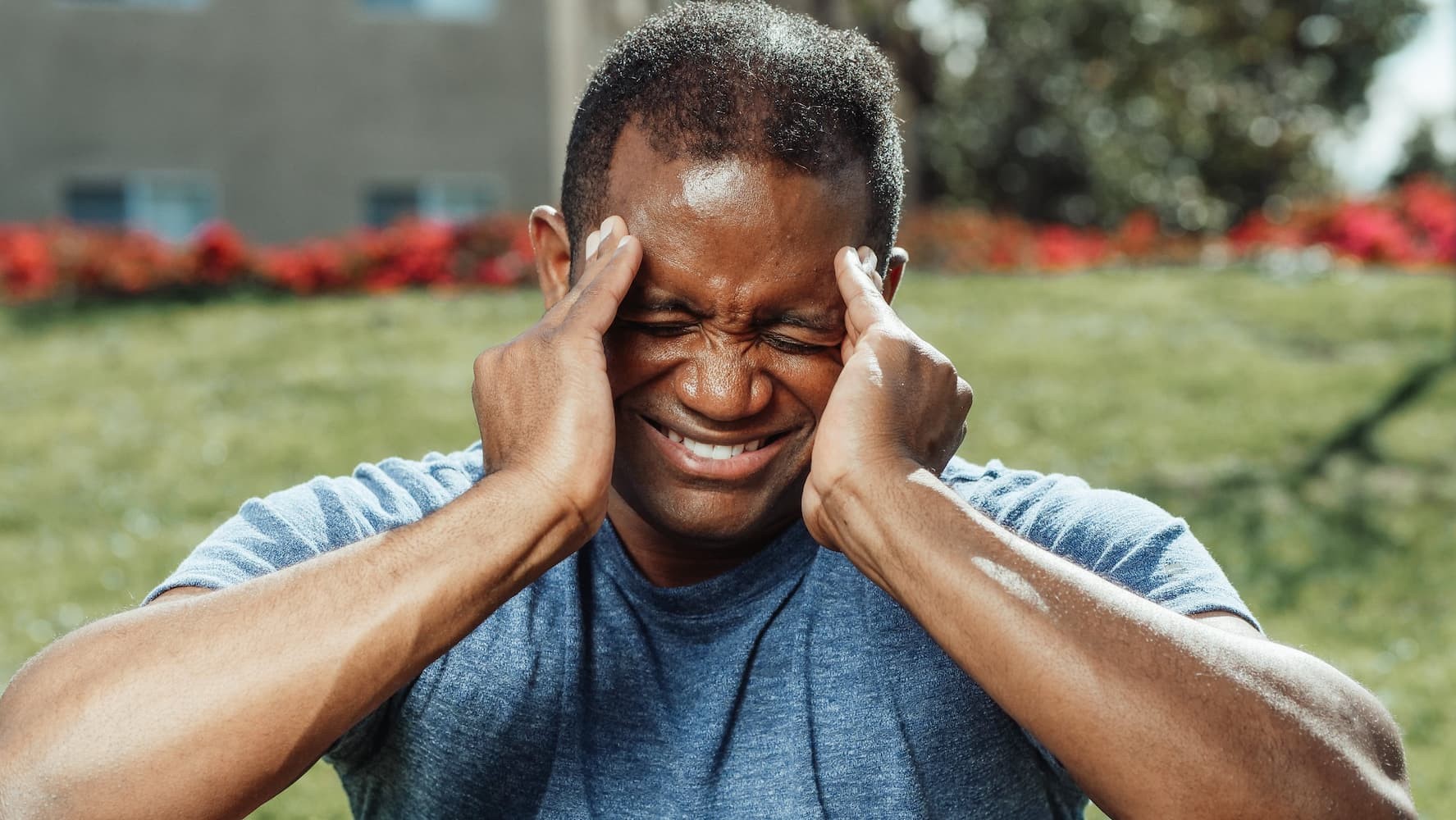
Do you know that one in four Australians lives with chronic pain? Are you one of them? If so, have you tried 'everything' to stop the pain, but your body still hurts? Current Australian scientific research may offer you surprising help.
Chronic pain is pain that persists past twelve weeks. Its impact on a person's quality of life can be huge. Not only does it hurt, it also interferes with all aspects of daily life: physical activity, daily routine, social activities and family relationships, how you view yourself and feel about yourself.
Taking the obvious step of pain-relieving drugs may or not work, although many people don't want to take drugs. Surgery may or may not work, and in some cases has worsened pain.
Because medicine finds it difficult to measure pain, medical practitioners may have disbelieved a sufferer searching for help, adding frustration and helplessness to the misery.
What's left to try?
Ever looked at your emotional history?
Regardless of what is physiologically causing this persistent pain, international scientific studies are increasingly investigating hidden connections between physical pain and emotional pain.
Mainstream pain clinics often focus on helping to release anger and other negative emotions. World pain expert Dr John Sarno has said, 'Accumulated anger is rage, and frightening, unconscious rage leads to the development of physical symptoms.'
Today's pain science advice from researchers, physicians, psychologists, physical therapists and neuroscientists tends to include such words as 'self-discovery', 'meditation', 'gratitude'…. This applies whether your pain follows an accident, fibromyalgia, past surgery or any other logical cause.
One of the mysteries of chronic pain is that many people whose X-rays show skeletal damage have no pain, while many others with identical X-rayed conditions daily battle terrible pain for years.
Experts on one scientific board explain it this way: 'Modern scientific research shows that psychological and emotional elements can play a major role in chronic pain.
'These non-physical components can help the brain "learn" to be in pain, re-wiring the body's neural circuitry to perpetuate the sensation of pain.
'But this means the brain can also "unlearn" pain, paving the way to physical pain relief.' (www.curablehealth.com)
New fMRI Research on Improving Pain Levels & Emotional Responses
Groundbreaking research being carried out by a former (2019) Australian Psychologist of the Year, Associate Professor Peta Stapleton of Bond University, is revealing direct links between easing both sufferers' emotional states and their chronic pain severity.
Dr Stapleton is utilising fMRI testing to pinpoint real-time changes in the brain, while a person lying in the machine uses a method called Emotional Freedom Techniques to banish even long-held emotional stress in minutes.
Banish stress in minutes? How?
Dr Stapleton has for ten years specialised in world-first scientific studies into the innovative stress reduction system known for short as EFT tapping. This is a formerly 'woo-woo' acupressure method of stress release that's now celebrated, because of its results, as a leader in the new healing field of Energy Psychology.
Dr Stapleton says, 'Did you know that 80% of chronic pain is considered to have psychological factors involved? When people feel emotional pain, the same areas of the brain are activated as when people feel physical pain too.
'So changing your feelings may be part of the recovery process.'
EFT involves tapping on specific acupuncture points on the head, hands and upper body while focussing on one personal stressful problem at a time. You can learn to do this yourself at a basic level.
However, here's a further surprise -- as movement is not allowed when a patient lies inside an fMRI machine, Dr Stapleton's volunteers simply imagine they are tapping on their bodies about their pain and their emotions. Results are commeasurable to those obtained by physical tapping and speaking, which EFT release normally requires.
Bad Memories Lightened With Tapping Therapy
This approach involves much more than how the person feels about having the pain, although that is part of the whole picture. Relevant factors may turn out to be unresolved events that apparently have nothing to do with the body, could have occurred long ago, and somehow are connected to psychological distress.
Longtime award-winning EFT researcher Dawson Church Ph.D. says, 'The speed with which EFT can drain the emotional intensity of even long-held memories is quite startling to people who have not witnessed it before.'
EFT's aims for pain issues are:
- to introduce some physiological calm
- to explore deeper issues than the physical of WHY a sufferer has this pain
- to neutralise as much of those contributors as possible. (These may include anxiety disorders, current stressors, ongoing stressors, post-traumatic stress disorder, resistance to change and working through stuck emotions, especially anger.)
Examples
- Three chronic pain sufferers attended one of my EFT classes on how to relieve chronic pain through tapping. One had shoulder pain she'd suffered continually over thirty years, one had back pain, one had a recurring leg pain that threatened her with collapse even after a series of operations.
Attendees took part in both one-to-one processes and group tapping. They were also learning how to lessen their own pain.
Two hours into the class, none of them had pain.
Importantly, they had learned that if pain returned they had more EFT tapping to do on resolving past emotional distress. (Please do not try to deal with trauma by yourself, I suggest you get professional EFT help.) - An interstate one-time client, Delrae, had an arthritic knee problem. Medically speaking, she had chronic pain in walking and standing because all the cartilage cushioning the bones of one knee had vanished because of arthritis.
Delrae had travelled to the city to explore surgical options for knee replacement. She limped into my client room (pre-COVID) with tears running down her face from the pain of walking bone-on-bone. She had not been able to bend the knee for six months, and had needed to leave work. She'd wondered if EFT tapping could reduce the continual pain.
We began by tapping away some of her anger about having the physical condition.
She then spontaneously followed her anger back throughout her life into huge heartfelt issues of rage and resentment. These were especially about her upbringing, about damage she felt was done to her through her family, her schooling, her church, damage which had later unfairly held her back. For an hour she expressed long-held anger with a minimum of words, in a way she had never done before.
She did this while tapping on EFT's selected acupoints and re-stating EFT's major exposure-and-reframe main statement ('Even though I have this problem, I deeply and completely accept myself').
After one hour – unbelieving that there could be any change -- she walked around my client room pain-free, still walking bone-on-bone, and she bent the leg without pain.
Six weeks later she emailed that she was still pain free, had gone back to work, and was calmly considering knee replacement options.
While improvement or release of chronic pain may well take more than one EFT tapping session, rapid relief is common with this leading-edge method.
To summarise -- millions of people around the world are discovering that chronic pain can hold surprising secrets connected with their negative emotions as well as with their physical hurts.
They are proving that lightening these emotions in whatever ways possible can also lighten the impact of pain, into partial or even perhaps full freedom.
Why not book an EFT tapping session for yourself now to not only improve your physical health but achieve a better quality of life as well?
References
- 'The Science Behind Tapping' by Dr. Peta Stapleton www.petastapleton.com
- 'The EFT Manual' by Dr. Dawson Church www.eftuniverse.com
- Curable Health www.curablehealth.com
- EFT INTERNATIONAL www.eftinternational.org










